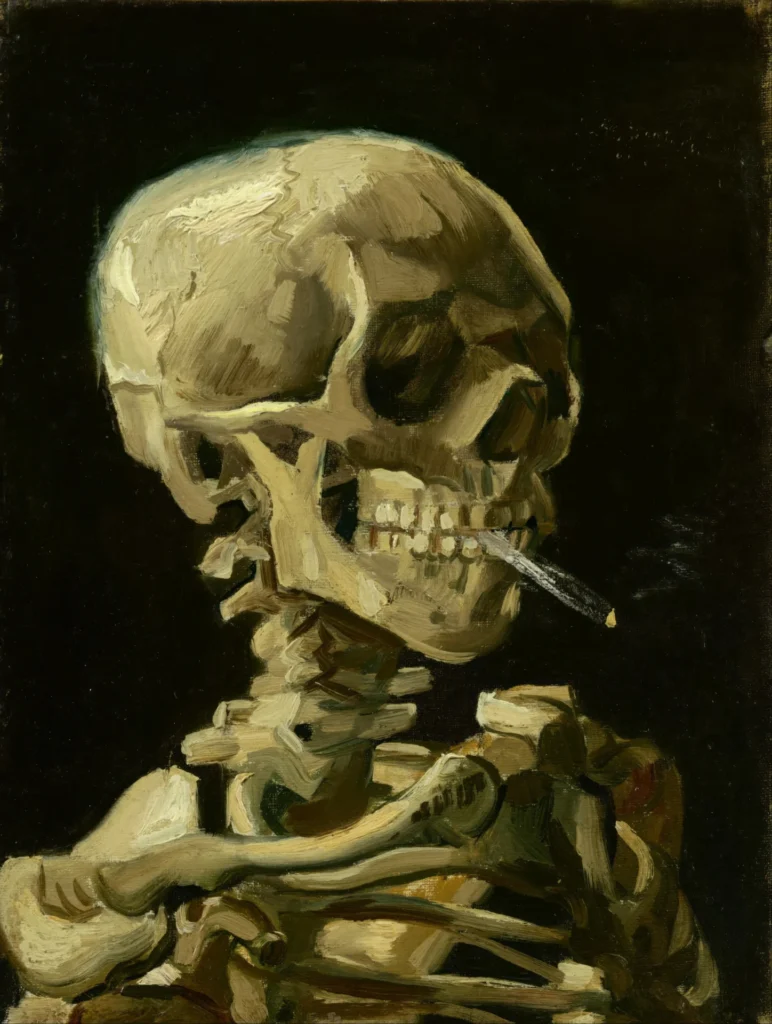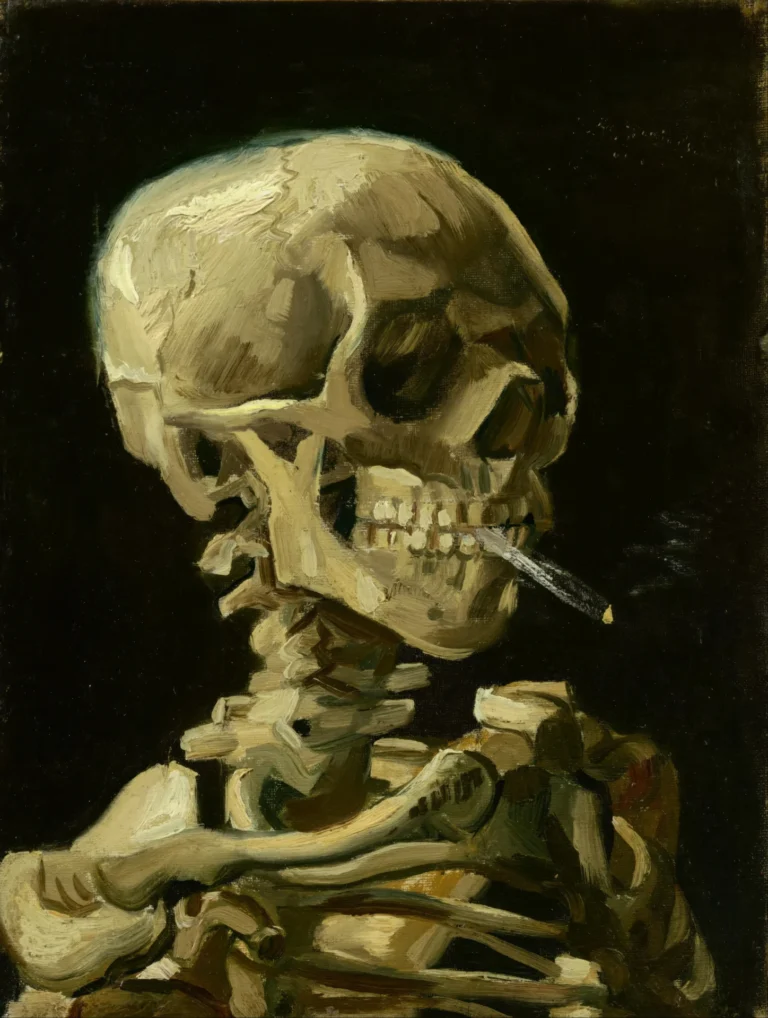Head Of A Skeleton With A Burning Cigarette
Vincent van Gogh's Head of a Skeleton with a Burning Cigarette is a captivating oil on canvas artwork created between 1885 and 1886 during his studies at the Royal Academy in Antwerp. Measuring 32.3 cm x 24.8 cm, this eerie yet intriguing painting features a skeleton with a lit cigarette in its mouth set against a stark black background. Van Gogh's technique is simple, lacking his energetic brushwork, which makes this piece a unique exploration of themes such as mortality, humor, and possibly a critique of smoking. Despite its seemingly casual execution, the artwork serves as a profound commentary on life and death.
Winter 1885 - 1886
About the Artwork
The story behind Head of a Skeleton with a Burning Cigarette reflects the challenges and explorations that defined Vincent van Gogh's early artistic journey. Created during a period marked by rigorous academic training, this work stands out as Van Gogh took the initiative to delve into subject matter not formally addressed in his coursework. The choice of a skeleton, coupled with the somewhat playful addition of a burning cigarette, speaks to a duality in his experiences—an engagement with themes of mortality influenced by the death of his father, juxtaposed with a light-heartedness characteristic of youthful artistic expression. The painting’s provenance, tracing through family ties to the Van Gogh Museum, further illuminates its significance in the artist's legacy.
Did You Know
This painting was created during Van Gogh’s studies at the Royal Academy in Antwerp, where students were typically required to draw skeletons to master human anatomy. The choice to paint a skeleton, therefore, underscores his dedication to developing his artistic skills beyond the curriculum guidelines.
The artwork can be interpreted as a ‘vanitas’ or ‘memento mori,’ serving as a stark reminder of mortality. This theme resonates with Van Gogh’s struggles with mental health and the death of his father, reflecting deeper existential concerns that permeated his later works.
Since 1973, this painting has been housed at the Van Gogh Museum in Amsterdam. Its journey includes ownership by Van Gogh’s brother Theo and later, his widow Johanna van Gogh-Bonger, signifying its importance in preserving Van Gogh’s artistic heritage.










